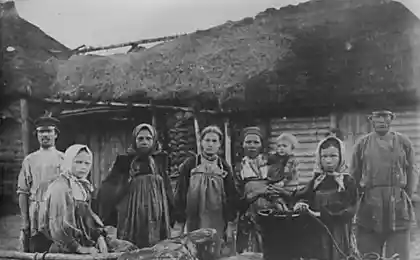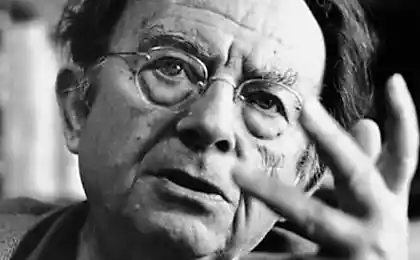825
Life story of a rich man of all time
Medieval King Mansa Musa I of Keita dynasty is considered the richest man in history, "richer than it is possible to describe».
Translated into the realities of 2012, experts estimated his fortune at $ 400 billion, putting it in first place in the list of the richest people in the mira.Kak still lived and the famed African, Europeans outridden Rothschild and Rockefeller American.
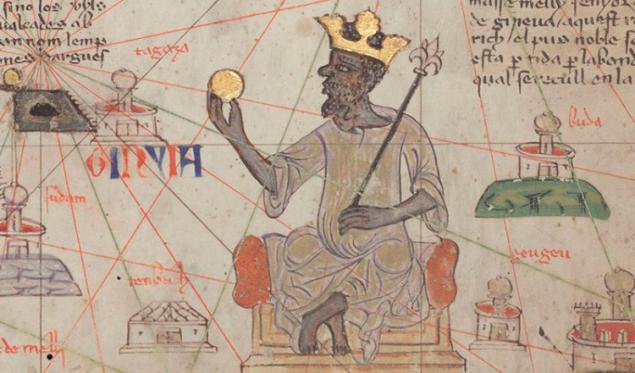
Sunny King
Moussa Keita I became the ruler of the West African empire of Mali in 1312. At the coronation he was given the name "Mansa", which means "king". In the Middle Ages Europe was going through a gloomy period of famine, epidemics, and countless civil wars and internecine strife. The African kingdoms as the sun was shining and things were going well.
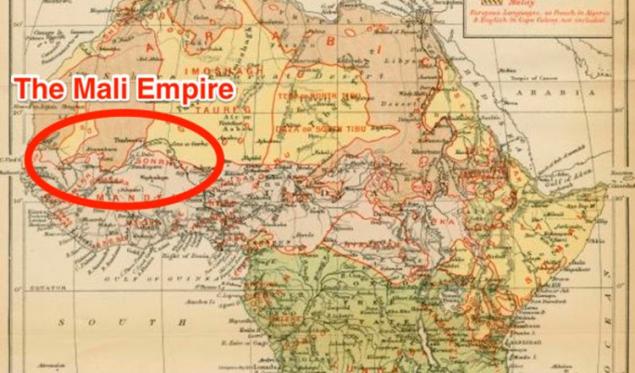
The ruler of the land of gold
Languages Mansa Musa covers a vast territory of modern Mauritania, Senegal, Gambia, Guinea, Burkina Faso, Mali, Niger, Nigeria and Chad. Earth abounded in precious natural resources, in particular gold. What was on hand who liked the good life to the king.
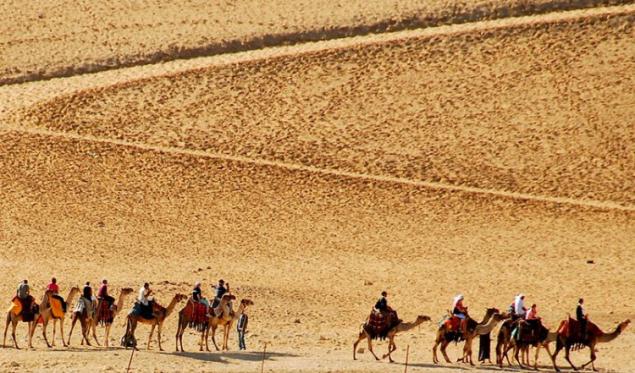
An unforgettable trip
The rest of the world the African ruler became known after he committed in 1324 the pilgrimage to Mecca. Travel to 6500 km was not economy. Pilgrimage as an act of austerity? Certainly not! "Caravans extend it as far as the eye can see," - shared supervision of contemporary
. Accompanied the king, according to various sources, from 60 to 80 thousand people suites. By lunchtime, in the heart of a barren desert in a tent pilgrims were brought a basket with fresh fruit and trays of fish and seafood on ice.
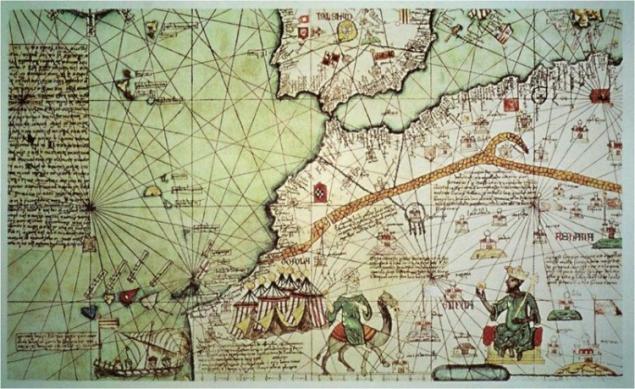
That's what they say in some sources: In 1324 (724 AH), a king or emperor of Mali, a country in Sub-Saharan Africa, in the upper reaches of the Niger, crossed the Sahara and arrived in Cairo on a pilgrimage to Mecca. In the language of Mali - "Malinke" - mansa means "king", Musa (Moses transformed) - Muslim name. It is not the first ruler of Mali, to make the pilgrimage to Mecca; at least two, three may be a precursor been there. But the pilgrimage Mansa Musa made a sensation. He was accompanied by a large retinue. Arab chroniclers, which are likely to exaggerate, say 12,000 or even 14,000 slaves, dressed in velvet and silk, Yemeni, who were carrying luggage.

Imagine the difficulties faced by the motorcade when passing through the desert. But the main thing - he brought with him what was the wealth and glory of his country: 100 packs (80 according to another source) of golden sand, with each pack was weighing three hundredweight. Arriving in Cairo, he made a gift to the sultan in price | 50,000 dinars ... In order not to remain in debt, the latter gave him a palace, horses and camels, and provided escort for the onward journey. It was said that he gave so much gold, that the price for it has fallen in Cairo ... Mansa Musa, performing his religious duty, Hidzhag lost in the desert, where he was attacked by the Bedouins. Yet he was able to return to Cairo. He squandered his treasures, that to make the return journey, he had to borrow from merchants 50,000 dinars and sell donated the palace. When in 1339 a Jew from Majorca A. Dulser created one of the first card, called "portulanami" he put on it, and the king of Mali Mansu Musa with a note on its gold wealth. Fellow previous Kreskes Abraham in 1375 perekopirovat card on your atlas. By their example at the end of the Middle Ages many maps placed name of the King of Mali, where it is called gong Musa (spoiled Kanku Musa, Kanku was the name of his mother, as in Mali that person time is usually called by the name of the mother)
.
Golden rain
During a stop in Cairo, Mansa Musa gave to the poor so much gold that it brought down the country's economy a good ten years: an abundant supply of gold and devalued it contributed to the incredible growth of prices
.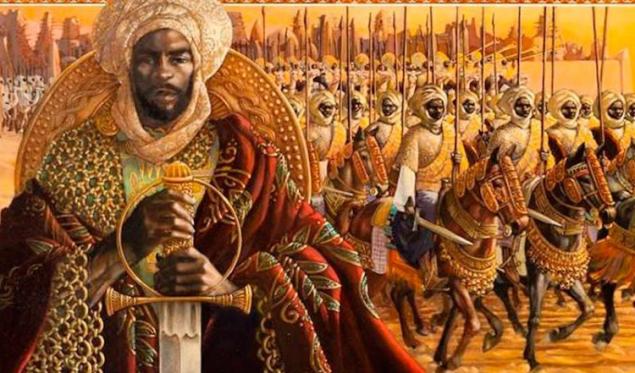
man-made monument
Mansa Musa loved not only gold, but also Islam. According to legend, the king ordered to build a new mosque every Friday in the place where will break camp.

went down in history (and geography)
Sensational journey of African ruler placed not only in the annals of history, but also in geography. Literally. His image was adorned with one of the most authoritative maps of Europe of the Middle Ages. Figure King, of course, holding a gold coin in his hand. It is a gold coin.
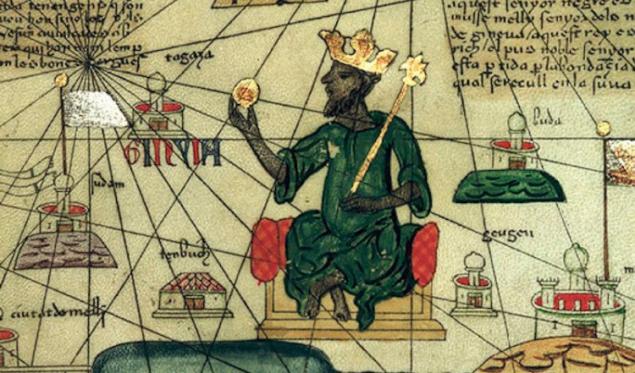
What is left
After twenty-five years reign of Mansa Musa died in 1337. Place on the throne occupied by his son Magan I, and everything went wrong. Son was far from his father not only of the chic, but also as a political leader. After a brief, but memorable, and flourishing empire of Mali moved toward the sunset.
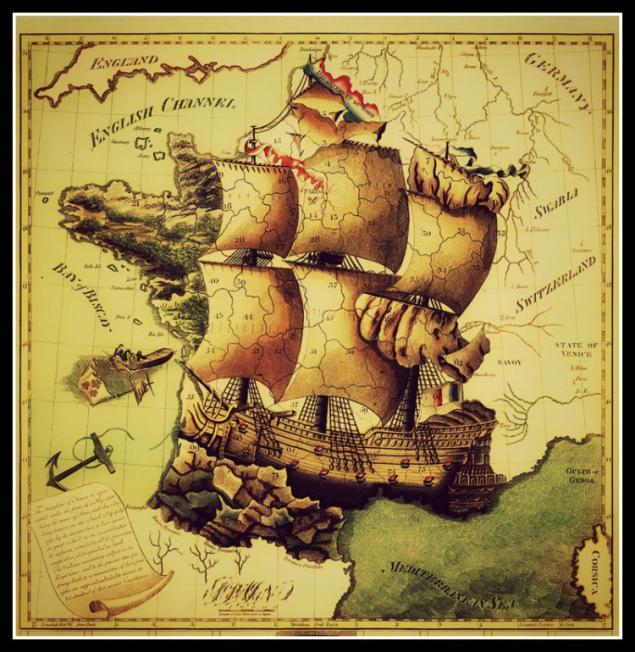
: Fishki.net
Loading ... Loading ... Loading ...
Liked? Share with your friends!
Loading ... Loading ...
Translated into the realities of 2012, experts estimated his fortune at $ 400 billion, putting it in first place in the list of the richest people in the mira.Kak still lived and the famed African, Europeans outridden Rothschild and Rockefeller American.

Sunny King
Moussa Keita I became the ruler of the West African empire of Mali in 1312. At the coronation he was given the name "Mansa", which means "king". In the Middle Ages Europe was going through a gloomy period of famine, epidemics, and countless civil wars and internecine strife. The African kingdoms as the sun was shining and things were going well.

The ruler of the land of gold
Languages Mansa Musa covers a vast territory of modern Mauritania, Senegal, Gambia, Guinea, Burkina Faso, Mali, Niger, Nigeria and Chad. Earth abounded in precious natural resources, in particular gold. What was on hand who liked the good life to the king.

An unforgettable trip
The rest of the world the African ruler became known after he committed in 1324 the pilgrimage to Mecca. Travel to 6500 km was not economy. Pilgrimage as an act of austerity? Certainly not! "Caravans extend it as far as the eye can see," - shared supervision of contemporary
. Accompanied the king, according to various sources, from 60 to 80 thousand people suites. By lunchtime, in the heart of a barren desert in a tent pilgrims were brought a basket with fresh fruit and trays of fish and seafood on ice.

That's what they say in some sources: In 1324 (724 AH), a king or emperor of Mali, a country in Sub-Saharan Africa, in the upper reaches of the Niger, crossed the Sahara and arrived in Cairo on a pilgrimage to Mecca. In the language of Mali - "Malinke" - mansa means "king", Musa (Moses transformed) - Muslim name. It is not the first ruler of Mali, to make the pilgrimage to Mecca; at least two, three may be a precursor been there. But the pilgrimage Mansa Musa made a sensation. He was accompanied by a large retinue. Arab chroniclers, which are likely to exaggerate, say 12,000 or even 14,000 slaves, dressed in velvet and silk, Yemeni, who were carrying luggage.

Imagine the difficulties faced by the motorcade when passing through the desert. But the main thing - he brought with him what was the wealth and glory of his country: 100 packs (80 according to another source) of golden sand, with each pack was weighing three hundredweight. Arriving in Cairo, he made a gift to the sultan in price | 50,000 dinars ... In order not to remain in debt, the latter gave him a palace, horses and camels, and provided escort for the onward journey. It was said that he gave so much gold, that the price for it has fallen in Cairo ... Mansa Musa, performing his religious duty, Hidzhag lost in the desert, where he was attacked by the Bedouins. Yet he was able to return to Cairo. He squandered his treasures, that to make the return journey, he had to borrow from merchants 50,000 dinars and sell donated the palace. When in 1339 a Jew from Majorca A. Dulser created one of the first card, called "portulanami" he put on it, and the king of Mali Mansu Musa with a note on its gold wealth. Fellow previous Kreskes Abraham in 1375 perekopirovat card on your atlas. By their example at the end of the Middle Ages many maps placed name of the King of Mali, where it is called gong Musa (spoiled Kanku Musa, Kanku was the name of his mother, as in Mali that person time is usually called by the name of the mother)
.

Golden rain
During a stop in Cairo, Mansa Musa gave to the poor so much gold that it brought down the country's economy a good ten years: an abundant supply of gold and devalued it contributed to the incredible growth of prices
.

man-made monument
Mansa Musa loved not only gold, but also Islam. According to legend, the king ordered to build a new mosque every Friday in the place where will break camp.

went down in history (and geography)
Sensational journey of African ruler placed not only in the annals of history, but also in geography. Literally. His image was adorned with one of the most authoritative maps of Europe of the Middle Ages. Figure King, of course, holding a gold coin in his hand. It is a gold coin.

What is left
After twenty-five years reign of Mansa Musa died in 1337. Place on the throne occupied by his son Magan I, and everything went wrong. Son was far from his father not only of the chic, but also as a political leader. After a brief, but memorable, and flourishing empire of Mali moved toward the sunset.

: Fishki.net
Loading ... Loading ... Loading ...
Liked? Share with your friends!
Loading ... Loading ...
This woman has already despaired Ever Lose weight. But her coach found a unique approach!
It was the 2016 th year. All prices rose and wages, as it were - No

















